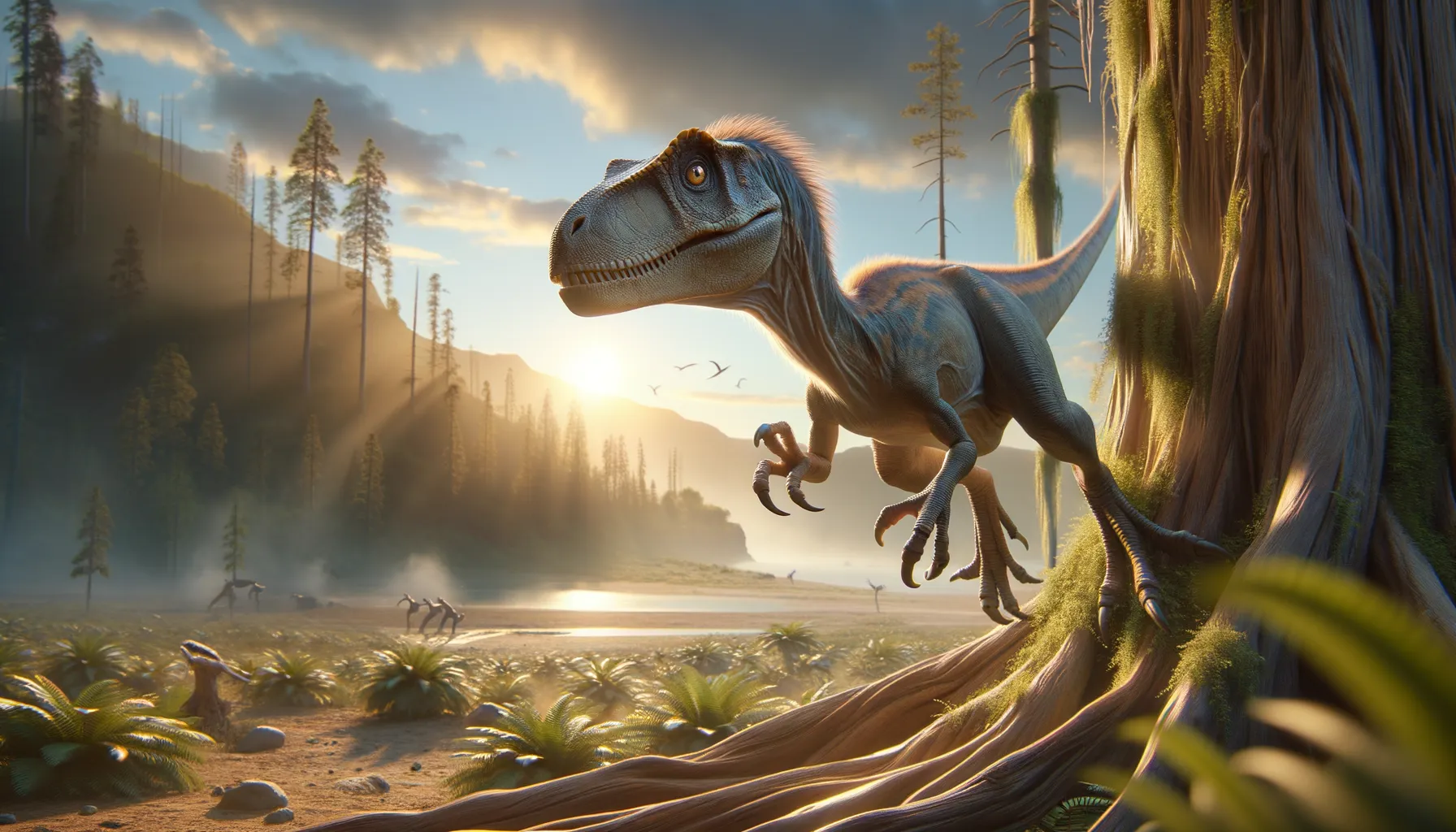
Dalianraptor
Swift and cunning in ancient lands.
Period
Cretaceous
Length
Roughly 2 meters long.
Height
About 1 meter tall.
Weight
Approximately 15 kilograms.
Dalianraptor was a small theropod dinosaur that roamed parts of Asia during the Cretaceous period. Known for its agility and possibly feathered body, it shared its environment with a diverse array of other reptiles and early mammals. Its lightweight build suggests it was a quick and dexterous predator, relying on speed and intelligence to capture prey and evade larger predators.
Diet
Dalianraptor was carnivorous, likely feeding on small vertebrates such as lizards and mammals. It may have also scavenged from larger predator kills, opportunistically taking advantage of available resources.
Hunting
Its hunting strategy possibly involved stealth and quick bursts of speed to capture prey. As a relatively small predator, it would have been important for it to use surprise to its advantage when hunting.
Environmental challenges
Dalianraptor faced challenges such as changing climates and competition for food with other small to medium-sized predators. The ecosystem of the Cretaceous was highly dynamic, with volcanic activity potentially altering habitats. Predation pressures from larger theropods would have required constant vigilance and adaptation to avoid becoming prey themselves.
Speed
Moderately fast due to agile build.
Lifespan
Estimated at 20 to 30 years.
First discovery
First discovered in Liaoning, China.
Fun Facts
- Dalianraptor lived during the Early Cretaceous period, which was about 125 to 113 million years ago.
- This dinosaur was named after the city of Dalian in Liaoning Province, China, where its fossils were discovered.
- Dalianraptor was a small, feathered dinosaur, roughly the size of a chicken, making it quite different from the giant dinosaurs that many people imagine.
- It was likely a fast runner, thanks to its long legs, which helped it hunt small prey or escape predators.
- Dalianraptor had a beak-like snout and sharp teeth, suggesting it had an omnivorous diet, eating both plants and small animals.
- Its feathers might have been used for insulation or display, although it couldn't fly like modern birds.
- Despite its small size, Dalianraptor's discovery has provided valuable insights into the evolution of birds and feathered dinosaurs.
Growth and Development
Dalianraptor likely grew rapidly to overcome its vulnerable juvenile stage. Evidence from similar species suggests that it may have developed adult features such as feathers used for display or thermoregulation as it matured. This rapid growth would have been crucial for survival in its competitive environment.
Habitat
It inhabited forested regions with abundant plant and animal life, providing ample cover and prey availability. The region's climate may have included seasonal variations in temperature and humidity. These forested areas would have supported a rich food web that included Dalianraptor as one of the smaller predators.
Interaction with other species
Dalianraptor likely interacted with other small dinosaurs, competing for similar food resources. It may have lived alongside early birds, which potentially influenced its own evolutionary path. Additionally, sharing space with larger predators would have required Dalianraptor to be constantly aware of its surroundings.
Natural lifespan
Its natural lifespan was likely around 20 to 30 years.
Reproduction
Dalianraptor possibly laid eggs in ground nests, similar to many other theropods. Parental care is uncertain, but some evidence in related species suggests that parents may have guarded their nests to improve offspring survival rates.
Social behaviour
There is limited evidence on Dalianraptor's social behavior, though some paleontologists speculate it might have lived in small groups or pairs, which could provide mutual benefits such as cooperation in hunting. Its social structure possibly varied depending on environmental conditions and food availability.
Fossil locations
Fossils of Dalianraptor have been found in the Liaoning Province of China. This region is known for its well-preserved fossils that provide insights into the flora and fauna of the Cretaceous period. These finds help paint a picture of the diverse ecosystem that Dalianraptor was part of.
